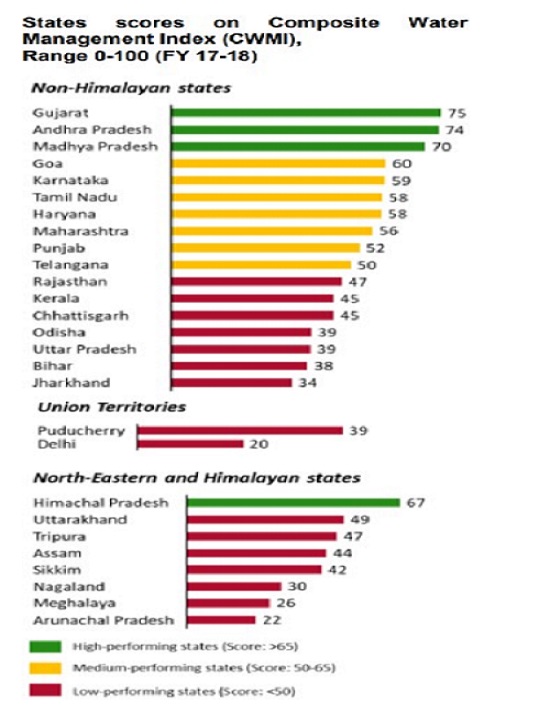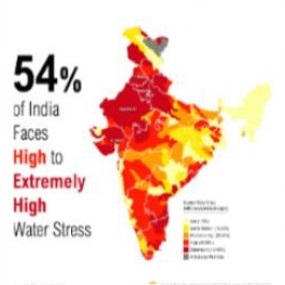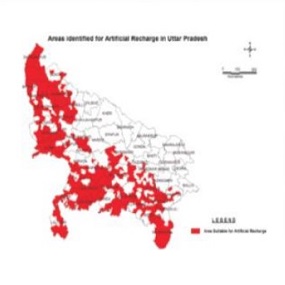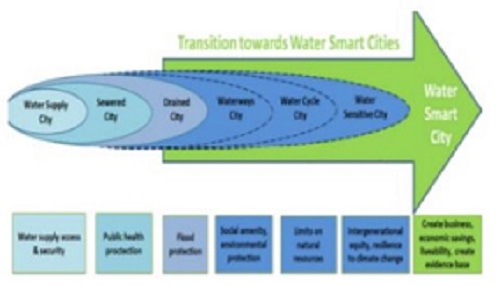This situation must improve.

Among low performing states (CWMI below 50), currently there are 29 cities (Uttar Pradesh: 14; Bihar: 4; Rajasthan: 4; Chhattisgarh: 3; Odisha: 2; Jharkhand: 1; and Delhi: 1) in the northern region under Smart Cities Mission (SCM) of India.
For a sustainable urban water management (SUWM), Brown et al. (2008) talked about “Transitioning to Water Sensitive Cities” through detailed historical, contemporary and research perspectives for Australian cities and defined six states of a city transition: ‘Water Supply City’, the ‘Sewered City’, the ‘Drained City’, the ‘Waterways City’, the ‘Water Cycle City’, and the ‘Water Sensitive City’. Parallel to several nations working in this direction, Center for Science and Environment (CSE) in India published a “Practitioner’s Guide” for ‘Water Sensitive Urban Design and Planning (WSUDP)’ in 2017. National Mission for Clean Ganga (NMCG) started capacity building initiatives on making water sensitive cities in Ganga Basin in 2021. In the meantime, Ministry of Urban Development (MoUD), Govt. of India launched Smart Cities Mission (SCM) in June 2015 to develop 100 ‘Smart Cities’ in the country which is likely to complete its first phase by June 2023. As per experts, the notion of a smart city is established from the combination of the knowledge society and digital city. The development of Information and Communication Technology (ICT) has given new ways of addressing urban challenges and problems, which have resulted in an opportunity to rethink the way we plan cities in a new urban form called ‘Smart Cities’.
Hattum et al. (2016) talked about moving ‘Towards Water Smart Cities (WSC)’ for climate adaptation. This is to create green, resilient and circular cities, so called ‘Water Smart Cities’ to improve the quality of life in such areas. The WSC approach integrates urban planning and water management to increase climate resilience with creating value for citizens.
Accordingly the focus of RHAR 2023 is to look on the conditions of our rivers through two lenses: the first being water conservation, and adoption of efficient practices to make the entire region ‘water positive’ and the second to create suitable infrastructures and systems for used water treatment, recycling and reuse around the cities to make them ‘water smart’, green, climate resilient and supporting circular economy. The objective is to collate and compile useful information, tools and techniques as well as national and international experiences to ensure ‘Water Positive Regions’ and ‘Water Smart Cities’ (WSC) so that our rivers flow in healthy conditions.
Our institutional partner, National Institute of Urban Affairs (NIUA) Delhi in association with the National Mission for Clean Ganga (NMCG) have established a ‘River Cities Alliance (RCA)’ of more than 100 river cities across India. RCA provides a platform for the Executive Officers, and senior officials of member cities to discuss and co-learn good practices for managing urban rivers.


